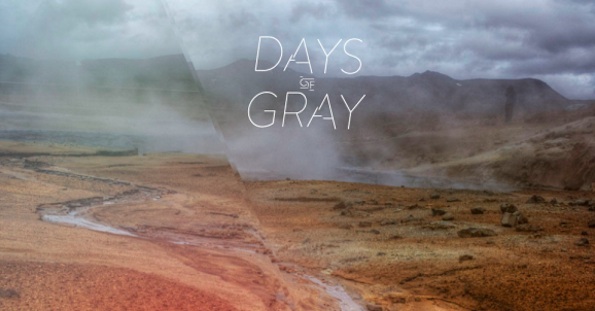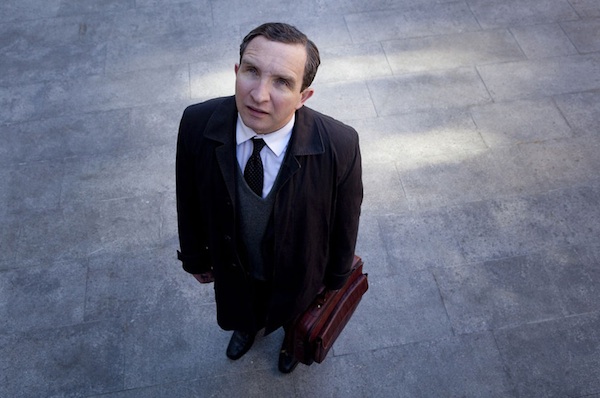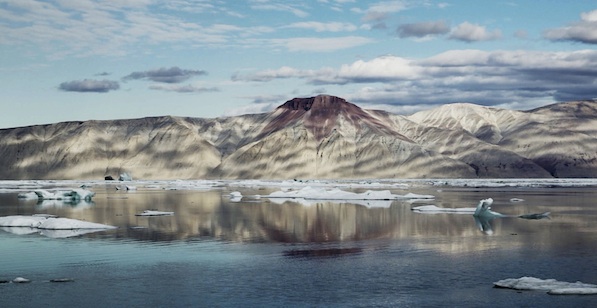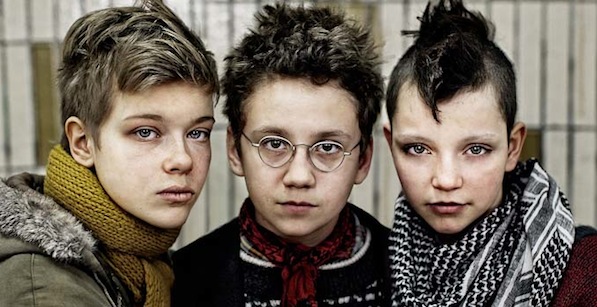Iceland’s domestic feature films are launched straight into the mainstream: as I write this, Iceland’s Oscar entry, Hross í Oss, projected most optimistically for a very limited arthouse release in the U.S., is sharing a mall multiplex’s LUX screen, featuring reclining seats and all the popcorn you can eat, with Runner Runner. Last year’s Icelandic Oscar entry, Baltasar Kormákur’s The Deep, had a theatrical release which was similarly timed as to be effectively competitive with the Reykjavík International Film Festival.
RIFF is not a showcase for Icelandic film so much as for Iceland itself: RIFF’s industry guests are chaperoned on driving tours around the epic countryside which, paired with attractive tax incentives, have proven increasingly popular with large-scale Hollywood productions.
RIFF weathered the kreppa—it’s darkly amusing to browse old festival programs and date the quite abrupt dissolution of the relationship between RIFF and former main sponsor Landsbankinn—and now, in its tenth year, is doing its part to bring people, and money, into the country. The center-right government returned to power in this spring’s elections has released a budget proposing drastic cuts to the Icelandic Film Fund, which is not just insulting to the country’s artists but actively counterintuitive, given the role which Iceland’s culture industry has had in salvaging an economy brought to the brink five years ago by the very parties now back in power.
In this context, it’s illuminating to look at Days of Gray, made in Iceland by two young New Yorkers, DP Cailin Yasko and director Ani Simon-Kennedy, who also co-wrote the script with an Icelandic film-school classmate, Hrafn Jónsson. The director has spoken in interviews of the inspiration to be found in the Icelandic landscape; mossy, wind-battered bleak expanses, rocky cliffs and black-sand beaches are photographed in attractive, awe-struck widescreen compositions.
The film’s official setting is not necessarily Iceland, but not necessarily not Iceland, especially given the aside the conspicuous cameos from postcard-iconic features like fish-drying racks and the Icelandic horse, and the post-volcanic implications of the scenario, in which everyone wears face masks outside for fear of contamination, and humans have lost the capacity to speak. Days of Gray is free of dialogue, and accompanied by a feature-length score by the Icelandic band Hjaltalín, which is at times post-apocalyptic musique concrèt, and at times a bit Beasts of the Southern Wild-ish ramshackle-orchestral. (One of the film’s two RIFF screenings featured a live performance of the score.) The film is less a silent movie than a music video, a genre which seemingly informed the production design—with its flavors of homespun brownscale clothes, rehydrated mush for dinner, and artisanal junk props—as well as the accessorized-fable storyline. Featuring an all-Icelandic cast—which includes, in addition to a RIFF producer in a small role, noted actress Margrét Helga Jóhannsdóttir, who played the mother of current Reykjavík mayor Jón Gnarr’s character on his sitcom Night Shift—the film concerns the rituals and tensions of one particular homestead, the son of which befriends and becomes fascinated by a parentless, maskless girl with a bold red scarf, living down by the sea. It all feels universal, and, crucially, exportable.
But exporting Iceland is only half of RIFF’s mandate—the other half being importing film culture for local audiences. RIFF greatly outpaces the distribution apparatus for specialty titles here (like most American cities in its population bracket, Reykjavík has a single arthouse cinema, which devoted probably twenty percent of its last 12 months of projector time to Searching for Sugar Man), and is a mid-major stopover for titles on the fall festival circuit, with films sorted into showcase and competition categories depending on the director’s pedigree. (This year, the Golden Puffin was claimed by Uberto Pasolini’s Still Life, which dropped down a weight class after a competition title was withdrawn at the last minute.) Nonfiction films, especially ecological docs, round out the program.
From the “A Different Tomorrow” program, Expedition to the End of the World is less a specialty issue-doc than a cross-section of human endeavor set against a stunning natural backdrop. A three-masted sailing vessel, carrying geologists, biologists, chemists and artists, sets out for the coast of Greenland, to observe uncharted areas revealed by receding ice. Climate change is acknowledged in differing ways (one of the more provocative artists argues that man’s concern over the alteration of the ever-changing earth is merely a form of vanity and petulance), but director Daniel Dencik mostly presents science in the old-fashioned sense, as an adventure past the horizon of human knowledge—self-knowledge not the least—as explorers from different disciplines seek common philosophical ground, compare field notes and drawings and wander the permafrost in search of a polar bear. Natural wonder and human comedy are meted out in equal proportion—the calving of glacial ice, and the creep of cabin fever—and sometimes mingled, as in the shots of one scientist taking to the arctic-blue skies in a Zodiac boat pimped out with glider wings.
Of the one-third of the competition titles I caught, the most memorable, at least, was Greek director Alexandros Avranas’s Miss Violence, which follows the Dogtooth template of withholding narrative and even visual information in imitation of a monstrous patriarch-as-national-metaphor. But Avranas, unlike Yorgos Lanthimos, takes no pains to transform or transcend his scenario, and settles on an unsurprising, unilluminating pile-on of sexual brutality. More sincere, at least, in its violence, is Vincent Grashaw’s Coldwater, which ends with a title card about the lack of any real regulation of juvenile-rehabilitation facilities; his story of a young offender at a fascistic wilderness bootcamp suggests some of the vital confusion of an unformed sensibility discovering itself in opposition to an unjust authority, but is ultimately too in awe of its own material. Stephan Lacant’s Free Fall is Brokeback Mountain except set in a provincial German police force. It is arguably political in its depiction of a riot-squad cop “going over” to his out, pot-smoking colleague, but mostly sympathetic in examining how macho institutional culture and family ties may hem in identity—sympathetic to a fault, as Lacant is unable to find justification for any emotional tone save pity for his torn, guilty protagonist. The most successful of my four dips into the competition is probably Ritesh Batra’s The Lunchbox. It has a simple premise, predicated on a rather edifying and flavorful look at white-collar Mumbai office culture, in particular its vast infrastructure of lunchbox-delivery services: a sour widower, nearing retirement, begins to accidentally be delivered the delicacies a young wife makes for her distant husband, and the two lost souls begin corresponding, pouring their hearts out to each other in little notes folded in with the flatbreads. Sentimental, certainly, but never cheap.
Among the many vital current titles RIFF brought to Iceland this year—Porumboiu’s bone-dry shaggy-dog self-parody When Evening Falls on Bucharest, or Metabolism; Fedorchenko’s mixtape of primal folklore carnality Celestial Wives of the Meadow Mari; eternal hipster Jarmusch’s paean to eternal hipsters Only Lovers Left Alive—were new films by James Gray, Laurent Cantet, and Lukas Moodysson, who were also welcomed with mini retrospectives. A few words, then, on Moodysson’s We Are the Best, which is almost so watchable as to elude critical insight, but is nevertheless knowing, in addition to ebullient, in its depiction of three adolescent girls who form a never-named punk band in 1982 Stockholm. Moodysson (born 1969), adapting a graphic novel by his wife Coco (born 1970), draws out moments that are perceptive about the persistence of gender preconceptions even within supposedly progressive scenes, and about the different types of commitment—social, religious, inward—that can bond or divide people even within the same subculture.
The infectious period soundtrack makes Moodysson’s heroines’ every act of directionless brashness feel triumphant—he knows something it’s never even occurred to them to consider, which is that their passion and defiance will someday serve them well in matters far more consequential than a bullshit gym class.







